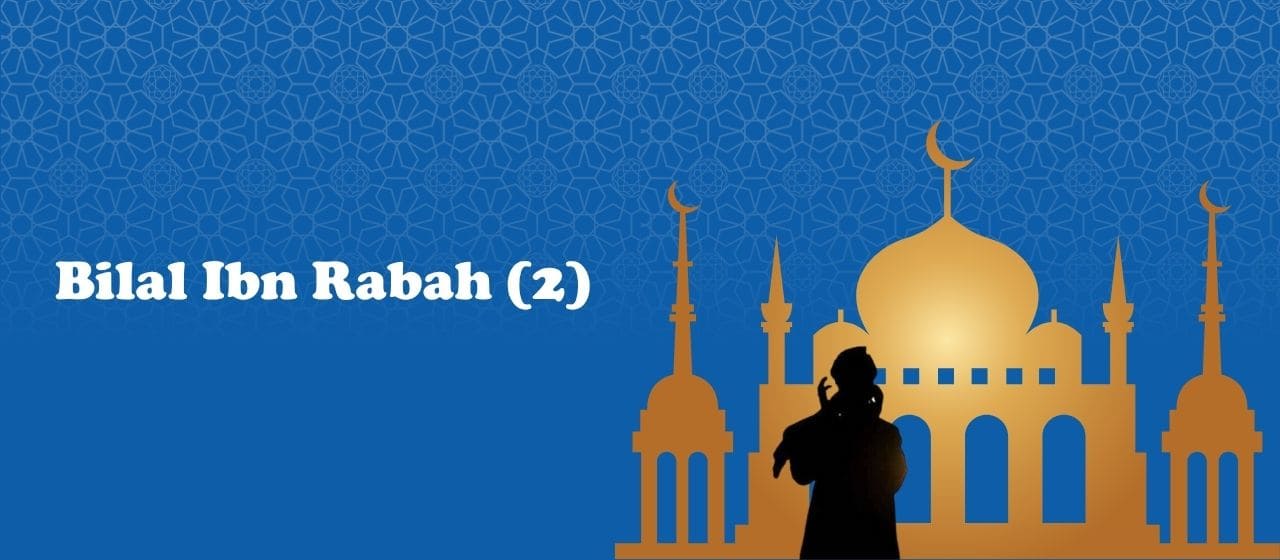Sayyiduna Bilal ibn Rabah (may Allah be pleased with him) was described in his physical appearance as being very dark-skinned, slender, and tall, with a slight stoop of the upper back toward the chest. He had thin sideburns, was very hairy, and did not dye his grey hair. His embrace of Islam brought him severe trials due to his status as a slave, yet he remained unwavering in his faith. As Sayyiduna Bilal held firmly to his Deen, Allah bestowed His victory upon him. Az-Zubayr ibn Al-Awwam said: ”One day, Abu Bakr Al-Siddiq passed by Bilal ibn Rabah while he was being tortured. He said to Umayyah ibn Khalaf, “Do you not fear Allah regarding this poor man? How long will you keep doing this?” Umayyah replied, “You are the one who has corrupted him, so save him from what you see.” Abu Bakr said, “I will. I have a black slave who is stronger and more capable for your work; I will give him to you in exchange for Bilal.” Umayyah said, “I accept.” So Abu Bakr gave him that slave and took Bilal, setting him free.
His Hijrah to Madina
Syyiduna Bilal migrated to Yathrib (Madinah) and stayed with Saad ibn Khaythamah. The Prophet Muhammad (ﷺ) established brotherhood between him and Ubaydah ibn al-Harith ibn al-Muttalib — and it is also said, between him and Abu Ubaydah ibn al-Jarrah. Bilal took part with the Prophet ﷺ in the Battle of Badr, where he killed his former master and tormentor, Umayyah ibn Khalaf. He also participated in all the subsequent battles alongside the Prophet (ﷺ). When the call to prayer (Adhan) was instituted, the Prophet (ﷺ) appointed Bilal as his muezzin, making him the first to call the Adhan. He was one of the three muezzins of the Prophet (ﷺ), along with Abu Mahdhurah al-Jumahi and ‘Amr ibn Umm Maktum — so if Bilal was absent, Abu Mahdhurah would call the Adhan, and if Abu Mahdhurah was absent, ‘Amr ibn Umm Maktum would do so.
the first Muazin in islam
Sayyiduna Bilal often accompanied the Messenger of Allah (ﷺ), who discovered the beauty of his voice and therefore commanded him to call the Adhan. Thus, Sayyiduna Bilal became the first to raise the call to prayer in Islam. Allah further elevated the man who once proclaimed “Ahad, Ahad (One, One)” by granting him the honor of ascending the roof of the Sacred Kaabah to call the Adhan from atop it. The Prophet Muhammad (ﷺ) described Bilal as one of those with the most beautiful and melodious voices. This took place in the eighth year after Hijrah, when the Messenger of Allah (ﷺ) conquered Makkah and purified the Kaabah from the idols that were inside it and surrounding it from every side.
Bilal Stops Calling the Adhan
When the Messenger of Allah (ﷺ) passed away, Bilal continued to call the Adhan, even though the Prophet (ﷺ) had not yet been buried. When he proclaimed, “I bear witness that Muhammad is the Messenger of Allah,” people wept bitterly in the mosque. After the Prophet (ﷺ) was buried, Abu Bakr said to him, “Call the Adhan.” Bilal replied, “If you freed me only so that I would be with you, then that is the way; but if you freed me for the sake of Allah, then leave me to Him and to the One for whom I was freed.” Abu Bakr said, “I freed you only for the sake of Allah.” Bilal replied, “Then I will not call the Adhan for anyone after the Messenger of Allah (ﷺ).” Abu Bakr said, “Then it is up to you.”
His death
When Bilal ibn Rabah was on his deathbed, he said: “Tomorrow we shall meet the beloved — Muhammad and his companions.” His wife exclaimed, “Woe to him!” Bilal replied, “No, rather, rejoice!” Bilal ibn Rabah passed away in Damascus in the year 20 AH. He was buried near the Bab Al-Saghir cemetery in Damascus at the age of sixty-five.


